A new IWLA report highlights the benefits of focusing federal, state, and local conservation dollars on farm and ranch practices that help solve multiple problems facing rural areas. “Leveraging Conservation Dollars: Agricultural Practices that Deliver Water Quality, Wildlife Habitat, and Soil Health” assesses five conservation strategies that reduce polluted runoff, provide habitat for fish and wildlife, improve soil health, and address climate change.
Congress is writing a new Farm Bill; states are working to reduce excess nutrients, pesticides, and bacteria in our waters; and federal, state, and local agencies are seeking cost-effective solutions to natural resource problems. Prioritizing practices that address more than one natural resource will produce the most conservation “bang” for our taxpayer bucks.
While use of the five conservation practices covered in the report (and highlighted here) is growing, none are in place on more than one-third of America’s farm and ranch lands. There is clearly room for improvement.
Each of these conservation practices benefits water quality, wildlife, and soil health, and each can help store substantially more carbon in the soil. When these practices are used in combination, the benefits multiply and can supercharge the regeneration of healthy soils.
The League is using this new report to educate federal, state, and local policymakers about the benefits of conservation as they design and deliver farm and ranch conservation programs. You can read the report and find more information on our website at www.iwla.org/ag.
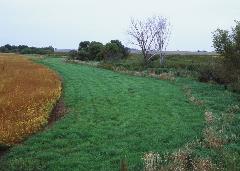 BUFFER STRIPS are grasses, trees, or shrubs planted in a strip between a crop field and a nearby stream or wetland. These buffers capture and filter soil, fertilizer, and pesticides that run off a farm field — before they end up in the water. Buffer strips also provide habitat for a wide variety of birds, mammals, and other wildlife, and native grasses help rebuild soil health.
BUFFER STRIPS are grasses, trees, or shrubs planted in a strip between a crop field and a nearby stream or wetland. These buffers capture and filter soil, fertilizer, and pesticides that run off a farm field — before they end up in the water. Buffer strips also provide habitat for a wide variety of birds, mammals, and other wildlife, and native grasses help rebuild soil health.
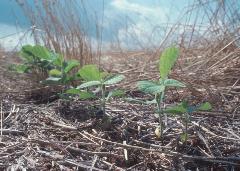 NO TILL is a system in which farmers stop using plows, disks, and cultivators to till farm fields because it tears up the beneficial fungi that help plants grow. Instead, stalks and leaves from corn, soybeans, and other crops are left in the field, where they help hold soil in place, provide winter cover for wildlife, and add organic matter to the soil.
NO TILL is a system in which farmers stop using plows, disks, and cultivators to till farm fields because it tears up the beneficial fungi that help plants grow. Instead, stalks and leaves from corn, soybeans, and other crops are left in the field, where they help hold soil in place, provide winter cover for wildlife, and add organic matter to the soil.
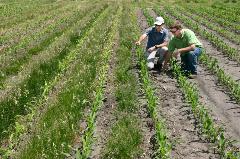 COVER CROPS are typically planted in the fall to provide growing plants in fields after a main crop is harvested. Cover crops provide food and cover for wildlife over the winter and well into spring. Living plants pump carbohydrates into the soil, feeding the beneficial bacteria and fungi; add to the carbon in the soil; and help prevent soil erosion.
COVER CROPS are typically planted in the fall to provide growing plants in fields after a main crop is harvested. Cover crops provide food and cover for wildlife over the winter and well into spring. Living plants pump carbohydrates into the soil, feeding the beneficial bacteria and fungi; add to the carbon in the soil; and help prevent soil erosion.
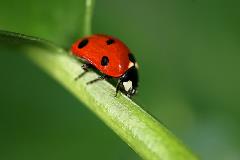 INTEGRATED PEST MANAGEMENT systems replace whole-field spraying of pesticides with more targeted methods of fighting weeds, insects, and other pests that can damage crops. Diverse crop rotations, beneficial insects, and spot spraying only where needed can substantially reduce the use of pesticides. That helps fish and wildlife that are sensitive to chemicals and protects bacteria and fungi in the soil.
INTEGRATED PEST MANAGEMENT systems replace whole-field spraying of pesticides with more targeted methods of fighting weeds, insects, and other pests that can damage crops. Diverse crop rotations, beneficial insects, and spot spraying only where needed can substantially reduce the use of pesticides. That helps fish and wildlife that are sensitive to chemicals and protects bacteria and fungi in the soil.
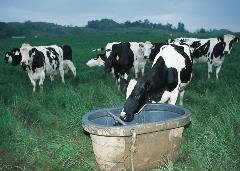 MANAGED ROTATIONAL GRAZING mimics wildlife migration by moving cattle, sheep, and other livestock from pasture to pasture as often as every day, giving grass plenty of time to recover. The technique provides more diverse grassland habitat for wildlife, can increase the carbon in the soil, and results in healthier grasslands.
MANAGED ROTATIONAL GRAZING mimics wildlife migration by moving cattle, sheep, and other livestock from pasture to pasture as often as every day, giving grass plenty of time to recover. The technique provides more diverse grassland habitat for wildlife, can increase the carbon in the soil, and results in healthier grasslands.
Stay up to date on other “Soil Matters.” Sign up for our agriculture e-newsletter.